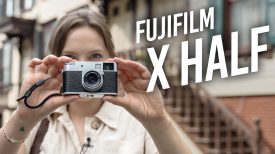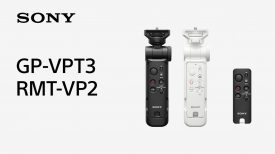By technical editor Matt Allard
The Invisible Enemy from Matthew Allard on Vimeo.
Over the past twelve months, I have spent more than 150 days in Japan covering the initial earthquake and tsunami and the aftermath of the Fukushima nuclear disaster, which continues to haunt the country today.
I was back this time to cover the one year anniversary. During the past year, I have seen an unprecedented scale of devastation and destruction. I have also learnt so much about radiation and the vastly different opinions from experts on the dangers of low level radiation. I have filmed and spoken to so many people who have told me horrific accounts of what they went through. I have found these people very inspirational and, through our repeated visits, now consider many of them friends. They graciously gave up their time to speak to us and tell us their stories with real heart and soul. On numerous occasions when listening to their stories or seeing people break down it was hard not to shed a tear. More than ever, it became important for me to shoot stories in a way that truly reflected who the individuals are and what they have gone through.
When people open up to you and let you into their lives, it is the least I can do to strive to depict their stories to the best of my abilities. Great cameras certainly help, but I often found it more important to let the people forget that the camera was there. Giving people space and time makes them feel more relaxed and makes what you shoot look more natural. I sometimes leave a camera rolling and walk away or keep rolling on one shot for a few minutes just so the person forgets that I am there, begins to act spontaneously, or gets lost in their own thoughts. As a style, I prefer to set up my shots rather than follow people with a hand-held camera, but it is also important for me to film people doing what they would naturally do and capture spontaneity. When shooting set-up shots, I always make sure that the person is comfortable. Apart from set-up interviews I also prefer not to use external lighting if I can avoid it. I would like to make the story look exactly like it is in reality. Cameras like the F3 cope very well in various lighting conditions.
I shot four stories for the anniversary coverage: A story on the towns around the 20km exclusion zone from the nuclear power plant; a story on the debate over low level radiation exposure; and two stories on how people now feel and are doing 12 months on. All these stories were shot on the Sony F3 and a lot of them were shot using S-log recorded to a Sound Devices PIX 240 external recorder. This assignment was the first time I used the PIX240 for an entire shoot. I found it invaluable for grading S-Log footage. The 11/3 story was shot 100% S-log. I was very impressed by how much I could manipulate ProRes 422 10 bit footage in post. I am a novice color grader though, and still very much learning how to do it! S-log is an amazing feature and it was invaluable in a lot of situations. Most of these stories were shot on overcast or snowing days where there was no sunlight at all, making everything you shot look quite washed out and bland. S-Log helped me control the bright highlights from the snow without blowing them out.
Haunted Memories from Matthew Allard on Vimeo.
A Tale Of Two Towns from Matthew Allard on Vimeo.
11/3 from Matthew Allard on Vimeo.
It being news, there were always time constraints, but I was lucky enough that the people I was shooting were so patient and generous with their time. I wanted the stories to have a common theme and common pacing – lots of images of people’s faces, longer shots and blending of transitions and sound. I have shot the stories hoping that the viewers will feel something after watching the stories and get a sense of who these people are and what they have gone through. If I am able to do just that, then I believe I have succeeded in doing justice to the people and the stories they told us.
One year of covering the disaster has given me a great perspective on how lucky I am. Many have lost whole families and everything they owned. I cannot imagine how I would even begin to cope if it happened to me. The Japanese people I met were very humble and extremely thoughtful; most of them put others before themselves. The sense of community, family and looking after your fellow man was so strong. I feel very fortunate to have met so many inspirational people and to have been in the position to shoot their stories.
Please note: The views and opinions expressed here are strictly my own and are not those of my employer.
About Matthew Allard, Aljazeera Senior Field Cameraman, Kuala Lumpur:
Matt has been a Camera/Editor in TV news for more 20 years, previously working for both Channel 9 and Channel 10 in Australia. Twice Network Ten Australia’s cameraman of the year as well as being a Walkley Finalist for outstanding camerawork in 2006 (for coverage of the Cronulla Race Riots) and a Logie Finalist for outstanding news coverage 2006 (Bali 9). He is a multiple ACS (Australian Cinematographers Society) award winner. His Sword Maker story that was shot on a 7D won the prestigious Neil Davis International News Golden Tripod at the 2011 ACS Awards. He has covered news events in more than 35 countries, from major sporting events to terrorist bombings. Based out of the Kuala Lumpur broadcast centre in Malaysia he is an avid user and follower of new technology, shooting stories on HD broadcast cameras, the Sony F3 as well as new Canon DSLRs.






